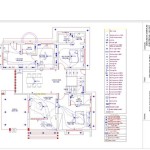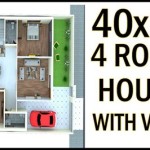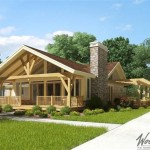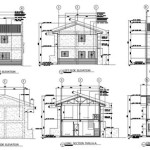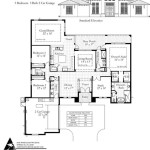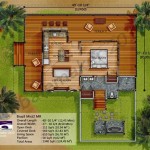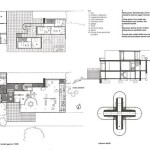Bungalow House Plan: Essential Aspects to Consider
Bungalow houses, characterized by their single-story design and charming aesthetics, have gained immense popularity over the years. Whether you're a first-time homebuyer or an experienced homeowner seeking a comfortable and efficient living space, understanding the essential aspects of a bungalow house plan is crucial.
Layout and Design
Bungalow houses typically feature an open-plan layout, allowing for seamless flow between rooms. The living room, dining room, and kitchen often occupy the central area, with bedrooms and bathrooms situated on the sides or corners. This design optimizes space utilization and creates a cohesive living environment.
Exterior Features
Bungalows exude a distinctive architectural style that sets them apart from other house types. Common exterior features include:
- Wide Porches or Verandas: These enhance the curb appeal and provide outdoor living spaces.
- Gable Roofs: Often with dormer windows, gable roofs add height and visual interest.
- Bay Windows: Projecting outwards, bay windows create a focal point and allow for ample natural light.
- Exterior Trim: Decorative molding and trim add architectural depth and character to the exterior.
Interior Features
The interior of a bungalow house is equally important, ensuring comfort and functionality. Key interior features include:
- High Ceilings: Soaring ceilings create a sense of spaciousness and airiness.
- Natural Lighting: Large windows and skylights flood the home with natural light, reducing the need for artificial illumination.
- Built-In Storage: Built-in cabinets, shelves, and benches maximize storage capacity, keeping clutter at bay.
- Fireplaces: Cozy fireplaces provide warmth, ambiance, and a focal point for gathering.
Functional Considerations
Beyond aesthetics, bungalow house plans should prioritize functionality. Consider the following aspects:
- Accessibility: Single-story living eliminates the need for stairs, making bungalows ideal for individuals with mobility challenges.
- Energy Efficiency: Proper insulation, energy-efficient appliances, and natural lighting reduce energy consumption and costs.
- Layout Optimization: The layout should maximize space utilization, create a logical flow, and minimize wasted space.
- Outdoor Access: French doors or sliding glass doors provide seamless access to outdoor living areas and natural light.
Customization Options
Bungalow house plans offer ample opportunities for customization. Homeowners can choose from various materials, finishes, and features to create a unique and personalized space. Consider:
- Exterior Materials: Brick, stone, vinyl siding, and stucco are popular exterior materials with varying aesthetics and durability.
- Roofing Options: Asphalt shingles, metal roofing, and clay tiles come in different styles and colors to complement the exterior.
- Floor Plans: While traditional bungalow plans have a set layout, modifications can be made to accommodate specific needs and preferences.
- Interior Finishes: Lighting fixtures, hardware, countertops, and flooring choices personalize the interior and reflect the homeowner's taste.
By considering the essential aspects outlined above, you can create a bungalow house plan that meets your needs, enhances your lifestyle, and provides a comfortable and charming living environment for years to come.

Your Guide To Bungalows What Is A Bungalow House And More Houseplans Blog Com

Splendid Three Bedroom Bungalow House Plan Modern Plans Design

Your Guide To Bungalows What Is A Bungalow House And More Houseplans Blog Com

Ranch House Plans Bungalow With Garage

Small Bungalow House Plans We Love Blog Dreamhomesource Com

House Design Plan 9x12 5m With 4 Bedrooms Home Bungalow Floor Plans Bedroom

Your Guide To Bungalows What Is A Bungalow House And More Houseplans Blog Com

Bungalow House Plans We Love Blog Homeplans Com

Simply Simple One Story Bungalow 18267be Architectural Designs House Plans

Adorable Farm House Style Plan 8662 San Gabriel Cabin
Related Posts

